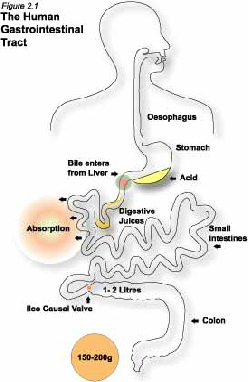Low Rectal Cancer
Know your Anatomy
The start of the journey is to have a better understanding o f our own body. Until you understand your digestive system, you cannot make informed decisions about the treatment, the consequences or options for low rectal cancer.
f our own body. Until you understand your digestive system, you cannot make informed decisions about the treatment, the consequences or options for low rectal cancer.
Overview
Your digestive system is uniquely constructed to perform its specialized function of turning food into the energy you need to survive and packaging the residue for waste disposal. To help you understand how the many parts of the digestive system work together, here is an overview of the structure and function of this complex system.
Mouth
The mouth is the beginning of the digestive tract; and, in fact, digestion starts here when taking the first bite of food. Chewing breaks the food into pieces that are more easily digested, while saliva mixes with food to begin the process of breaking it down into a form your body can absorb and use.
Esophagus
Located in your throat near your trachea (windpipe), the esophagus receives food from your mouth when you swallow. By means of a series of muscular contractions called peristalsis, the esophagus delivers food to your stomach.
Stomach
The stomach is a hollow organ, or "container" that holds food while it is being mixed with enzymes that continue the process of breaking down food into a usable form. Cells in the lining of the stomach secrete a strong acid and powerful enzymes that are responsible for the breakdown process. When the contents of the stomach are sufficiently processed, they are released into the small intestine.
Small intestine
Made up of three segments — the duodenum, jejunum and ileum — the small intestine is a 22-foot long muscular tube that breaks down food using enzymes released by the pancreas and bile from the liver. Peristalsis also is at work in this organ, moving food through and mixing it with digestive secretions from the pancreas and liver. The duodenum is largely responsible for the continuous breaking-down process, with the jejunum and ileum mainly responsible for absorption of nutrients into the bloodstream. Contents of the small intestine start out semi-solid, and end in a liquid form after passing through the organ. Water, bile, enzymes and mucous contribute to the change in consistency. Once the nutrients have been absorbed and the leftover-food residue liquid has passed through the small intestine, it then moves on to the large intestine, or colon.
Educate Yourself
The Structure and Function of the Digestive System - Basic Description
Guide to Bowel Movement A description from mouth to anus
Explore on Goggle with these key words: Digestive Anatomy, Stomach, Digestion